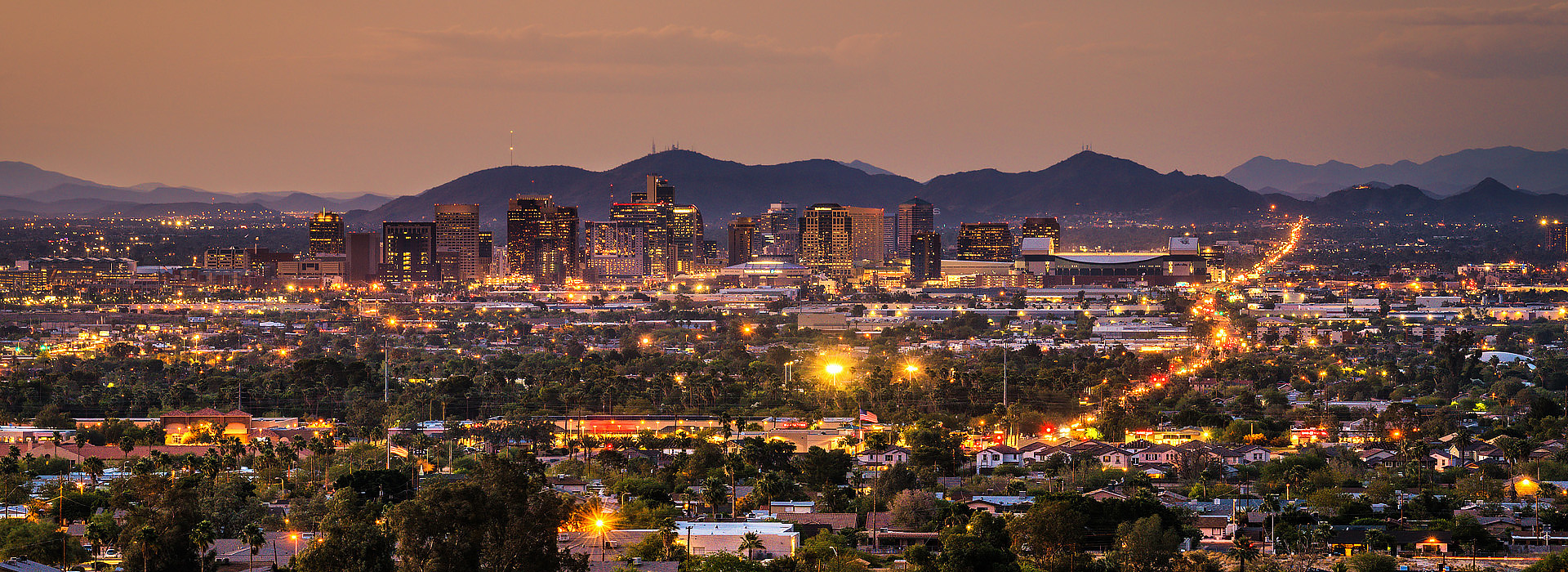You see it all the time - a motorcyclist decides to split the lane to get through traffic. But is it legal? And what are the potential risks to both a motorcyclist and other drivers when a cyclist decides to split the lane?
Lane Splitting
Lane splitting, or lane sharing, is only legal in California although other states have attempted to pass legislation that would legalize the practice.
Specifically in Arizona, these are the restrictions when it comes to lane splitting:
A. Not authorized
B. The operator of a motorcycle shall not overtake and pass in the same lane occupied by the vehicle being overtaken.
C. A person shall not operate a motorcycle between the lanes of traffic or between adjacent rows of vehicles.
In Support of Lane Splitting
This last May, the University of California at Berkeley published a report that concluded that motorcyclists who split lanes while riding in heavy traffic are significantly less likely to be struck from behind by other motorists they are sharing the road with. Additionally, the motorcyclists are less likely to suffer head or torso injuries, and are less likely to sustain fatal injuries in the event of a crash.
The study that was led by Dr. Thomas Rice of the Safe Transportation Research and Education Center (SafeTREC) reviewed almost 6,000 motorcycle-involved traffic collisions between June 2012 and August 2013. Of those 6,000 collisions, 997 of the motorcycle riders were splitting lanes when the crash occurred.
Following this study’s publication, the National Agenda for Motorcycle Safety (NAMS) released there recommendation:
“A motorcycle’s narrow width can allow it to pass between lanes of stopped or slow-moving cars on roadways where the lanes are wide enough to offer an adequate gap. This option can provide an escape route for motorcyclists who would otherwise be trapped or struck from behind. There is evidence (Hurt, 1981) that traveling between lanes of stopped or slow-moving cars (i.e., lane splitting) on multiple-lane roads (such as interstate highways) slightly reduces crash frequency compared with staying within the lane and moving with other traffic.
“Although lane splitting is allowed in just a few areas of the United States, notably California, it appears to be worthy of further study because it offers a means of reducing congestion in addition to possible safety benefits. It is widely used in many other countries.”
So if it has been proving that lane splitting is safe, then why is it illegal?
Dangers of Lane Splitting
The main reason why lane splitting is seen as dangerous is because it limits other drivers’ ability to see motorcyclists. And as we know, when drivers do not have full visibility, accidents happen. That coupled with speed can be a dangerous combination.
As the UC Berkeley study found, lane splitting motorcyclists that ride at speeds 10 mph faster than the surrounding traffic stand a greater chance of being involved in an accident. This is compounded by the time of day - accidents happen with greater frequency in the early morning and late afternoon during rush hours.
As the study concluded, lane-splitting is generally safe as long as it’s done at a reasonable speed.
It goes without saying that speed is a common determining factor in most accidents. Below we examine a few other factors that can play a role in motorcycle accidents.
Motorcycle Accidents
There are numerous things in addition to speeding that can cause motorcycle accidents: driver inexperience, bad weather conditions, loss of visibility, and carelessness are just a few.
If you’ve been in an accident, here’s a list of things to NOT do:
- Leave the scene. You are legally required to stop, check on the other person and car involved, exchange all insurance and contact information and report it to law enforcement. Failure to do so means you’ve committed a crime.
- Forget to call 911. Even if the car accident seems minor, if you don’t get an official police report that documents the accident, what proof do you have? Sometimes law enforcement might not respond to collision unless there are injuries, but you always have an opportunity to get a report of the accident. This can help in the claim process, as well as protect you.
- Lose your cool. Try to remain as calm as possible and be polite.
- Admit fault. Do not admit to anything. But doing so, you’re legally admitting liability for the accident. This can expose you to lawsuits or other penalties.
- Forget proper documentation. Documenting any damage done to cars or the scene will provide you with any necessary evidence should the accident lead to a lawsuit. Try to take a few minutes to write down what happened from your point of view. Note time, date, streets, makes models and colors of cars, direction you were heading, contact information, and information from any witnesses that were at the scene. This will all help to build your case and help determine liability.
In addition to structural damage, there are also numerous injuries that can happen as a result of a motorcycle accident, including:
- Road rash
- Broken bones
- Destroyed motorcycle
- Loss of limbs
- Bruising and internal bleeding
- Death
- Loss of license
- Fines
- Jail time
All of these are potential reasons for why you might file a lawsuit to recover damages. There are some considerations you will need to take into account if you decide that filing a lawsuit is the next step you want to take.
Considerations **
**
Clarifying Cause. Before you file your motorcycle accident lawsuit you will need to clarify the specific of the accident and how it occurred. Was it a one-vehicle accident in which the driver simply lost control of the motorcycle? In this instance it is likely that there would be no viable legal action, unless the accident occurred as a result of a defect in the bike that was not discovered prior to the accident. Examples of this could be a faulty mechanism in the bike that the manufacturer was not aware of. A recent example of manufacturer error can be seen in the fault ignition switches in cars manufactured by General Motors. If you feel that there was a mechanical error that contributed to your accident you should immediately contact an attorney that can investigate the accident and determine if the fault was driver error or mechanical error.
Perhaps this was a two-vehicle accident? If the crash was caused by another vehicle and occurred because of negligent conduct such as speeding, the presence of alcohol, or the failure to yield to the right-of-way, then you might want to consider taking legal action. A lawyer will be able to investigate the situation and determine if you have a case.
Clarifying Damages – For a legal action to be considered valid there will need to be some form of damage that has occurred. That means that if you say you were hit by a car while riding your bike, but there is no physical damage (to the vehicles involved or people involved) and there are no witnesses to help determine the accident occurred, you will have a very difficult (if not impossible) time proving there was an accident. That’s why this is crucial to see a doctor immediately following and accident and to also maintain an accident journal following an accident. Often times injuries are not obvious following an accident but appear later.
Potential Damages in a Motorcycle Accident
These are valid reasons you might consider filing a motorcycle accident lawsuit:
- Any and all motorcycle repairs and/or replacement
- Any and all medical bills that are received as a result of the accident
- Any and all physical rehabilitation costs that are incurred as a result of the accident
- Lost income due to time spent recovering from the accident
- Pain and suffering
These damages could all be rightfully pursued and recovered in a civil law setting.


